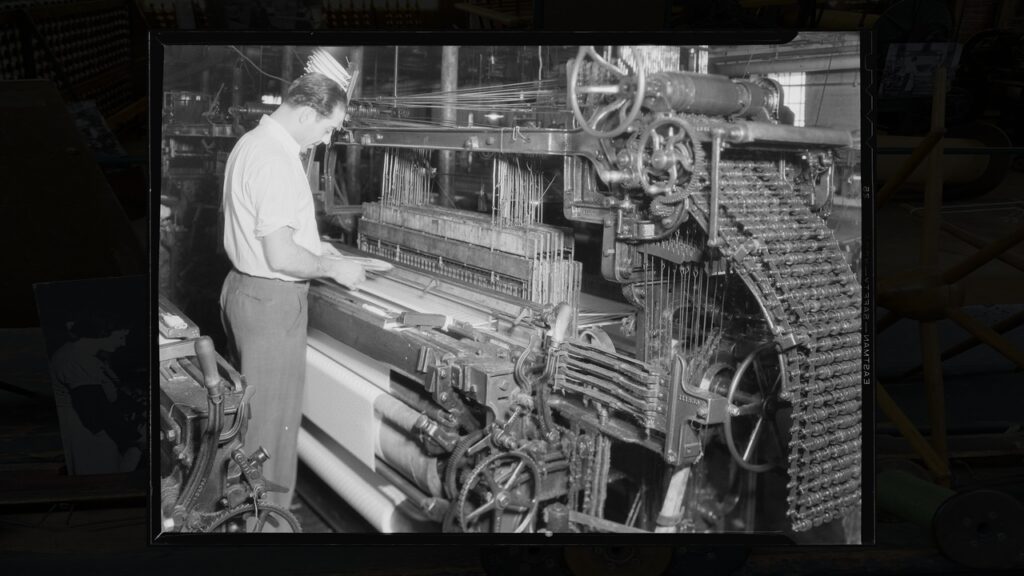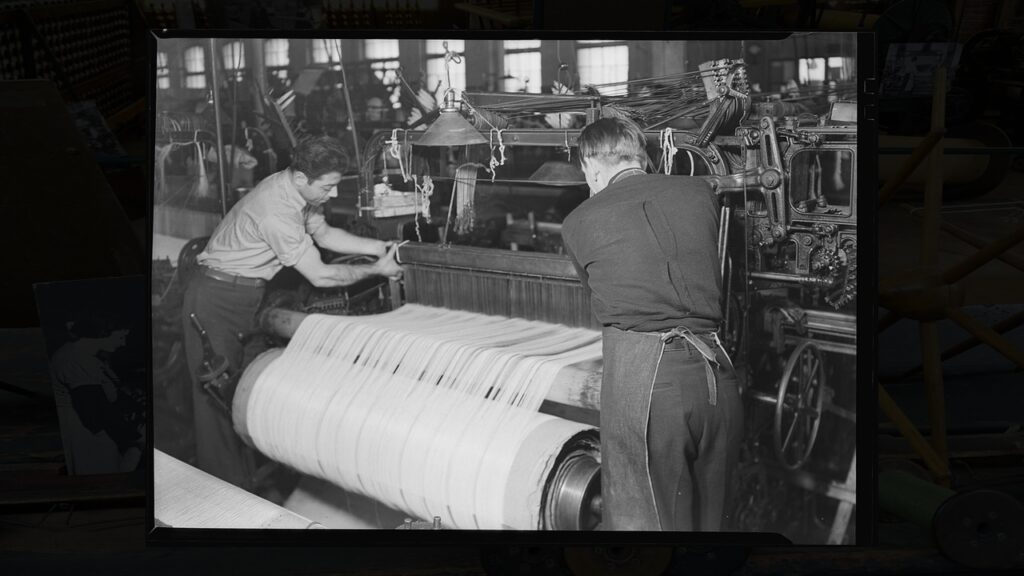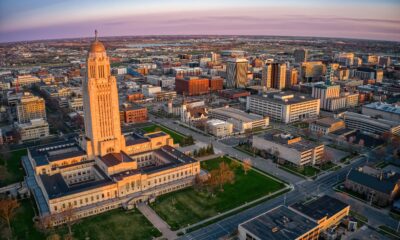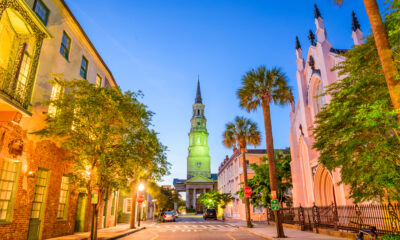New Jersey
This New Jersey waterfall town became America’s silk empire through one man’s vision
Published
6 days agoon

John Ryle’s Transformation of Paterson into Silk City
John Ryle was just seven when his parents died, forcing him to work in English silk mills.
By 1839, the young man sailed to America and soon took over a failed silk operation in Paterson, New Jersey.
Three years later, he made the first successful textile owner. His vision turned Paterson into “Silk City” by 1870, when it made half of all American silk.
Despite losing everything to fire in 1869, Ryle rebuilt with help from a friend who handed him $30,000 cash on the spot.
The Paterson Museum now showcases how this orphan boy built an entire American industry from scratch.

Worked in Silk Mills At The Age of Seven
John Ryle was born on October 22, 1817, in Bollington, England. His parents, Peter Ryle and Sarah Brunt, worked in the silk business.
John grew up with sixteen brothers and sisters, but only five reached adulthood. Life got tough when his dad died in 1820, leaving John fatherless at three years old.
His mom died four years later, making him an orphan at seven. John started working in Macclesfield silk mills as a “bobbin boy” at just five years old.
His older brothers Reuben and William became England’s biggest silk makers.

A Ship Ticket Changed His Life Forever
John Ryle sailed from Liverpool to New York on March 1, 1839, at age 22. He first planned to look for business chances for his silk-making brothers, but America won him over.
He got a job at Samuel Whitmarsh’s silk mill in Northampton, Massachusetts during the multicaulis silk craze. When the silk bubble burst in 1839, John lost his job after his boss went broke.
He moved to New York and opened a small shop selling his brothers’ English silk goods at the corner of Maiden Lane and William Streets.

Two Men Bought a Failed Silk Factory
John met businessman George W. Murray in 1839, who wanted to start making silk.
They found Christopher Colt in Hartford, Connecticut, who owned a failed silk machine shop in Paterson’s Old Gun Mill.
Murray bought Colt’s plant in 1840 and put John in charge of running everything.
The young Englishman proved his worth, and Murray made him a partner three years later in 1843. Their business ran under the name Murray & Ryle.

America’s First Silk Success Happened in 1842
John set up a row of silk looms in 1842 and made America’s first successful skein of silk. This breakthrough put the United States on the map as a real silk-making country.
John pulled it off thanks to skills he learned as a kid working in English silk mills. He solved the problems that had sunk earlier American silk attempts.
His achievement started America’s own silk industry.

He Bought the Whole Business and Building
By 1846, John bought out Murray’s share of the business with money from his brothers Reuben and William back in England.
He took over the whole operation himself.
The next year, he bought the Old Gun Mill building where his machines ran. John kept growing his facilities and making more silk as the years went by.
His success was so big that by 1846, people started calling Paterson “Silk City” because of how much silk came from his mills.

Traveling Europe to Steal Silk-Making Secrets
John went to Europe in 1850 to learn advanced silk-making methods. He visited the main silk factories in France, Italy, and Switzerland to see how they did things.
He learned about the newest European production techniques and machine improvements. When he came back to America, he brought these better methods to boost American silk production.
He used what he learned in Europe to update and grow his Paterson factories.

The Mayor Who Designed Paterson’s Symbol
Voters picked John as Mayor of Paterson for the 1869-1870 term by the biggest margin any candidate had ever gotten.
He never wanted a government job before but gave in. As mayor, John created Paterson’s official coat of arms showing a young man planting a mulberry bush.
This symbol connected to the silk industry since silkworms eat mulberry leaves. The city still uses his coat of arms design today.

Fire Destroyed Everything He Built
Disaster struck on May 10, 1869, when fire burned through Murray Mill, destroying $600,000 worth of silk and machines that John hadn’t insured.
He lost most of his money in the fire, making it impossible for him to start over on his own.
Fellow businessman George Jackson showed up right after the fire and gave John $30,000 cash to help him rebuild.
Friends formed the Ryle Silk Company to give him more financial help. The community rallied around John.

His New Factory Design Changed American Manufacturing
John finished building the new Murray Mill in 1870 with new design features. He built a one-story mill with light coming from the top instead of the usual multi-floor design.
His idea worked perfectly, creating the best-lit mill in Paterson with better working conditions. The north-facing windows kept direct sunlight from bothering workers.
His new design became a model for future mill construction across America.

The Silk King Gave Back to His City
John paid for Paterson’s entire sewer system out of his own pocket. He built the city’s first public park at Passaic Falls for everyone to enjoy.
In 1870, he started the Passaic Water Company. His business success spread beyond Paterson, and by 1870, the city made half of all silk produced in America.
John also pushed for laws in 1861 that limited British silk imports, protecting American silk makers from foreign competition.

Death Came While Visiting His Homeland
In 1887, John traveled back to England with his daughter Jemima to see the places from his childhood. While getting dressed for church in a Macclesfield hotel, he suffered a stroke and died on November 6, 1887.
His body made the journey back to Paterson for burial in Cedar Lawn Cemetery, where a large stone obelisk marks his grave.
John left behind an established American silk industry that led national production.
People remember him as the “Father of American Silk Industry” who turned raw potential into a thriving national business.

Visiting Paterson Museum, New Jersey
The Paterson Museum at 2 Market Street tells John Ryle’s story from orphaned child laborer to America’s silk king.
You can see the automated looms and textile machinery he used to build the nation’s silk industry from 1839 to 1887.
The museum is in an 1873 locomotive shop building and costs just $2 for adults (kids free). It’s open Tuesday-Friday 10am-4pm and weekends 12:30pm-4:30pm.
This article was created with AI assistance and human editing.
Read more from this brand:
John Ghost is a professional writer and SEO director. He graduated from Arizona State University with a BA in English (Writing, Rhetorics, and Literacies). As he prepares for graduate school to become an English professor, he writes weird fiction, plays his guitars, and enjoys spending time with his wife and daughters. He lives in the Valley of the Sun. Learn more about John on Muck Rack.


New Mexico Albuquerque International Balloon Fiesta wrap-ups and fall arts

Mississippi Natchez Trace fall festivals and music events

Minnesota New Ulm and German heritage Oktoberfest events
America’s most liberal places to live in 2025

14 fall camping spots in the U.S. for chilly nights and starry skies

12 Reasons Why You Should Never Ever Move to Florida

Best national parks for a quiet September visit

In 1907, Congress forced Roosevelt to put God back on U.S. coins. Here’s why.

The radioactive secret White Sands kept from New Mexicans for 30 years

America’s most famous railroad photo erased 12,000 Chinese workers from history
Trending Posts

 Pennsylvania3 days ago
Pennsylvania3 days agoHere Are 12 Things People from Pennsylvania Do That Seem Insane To Everyone Else

 North Carolina4 days ago
North Carolina4 days agoHere Are 12 Things People from North Carolina Do That Seem Insane To Everyone Else

 Nebraska6 days ago
Nebraska6 days agoHere Are 12 Things People from Nebraska Do That Seem Insane To Everyone Else

 Maine5 days ago
Maine5 days agoThe ruins of a town that time forgot are resting in this Maine state park

 New York4 days ago
New York4 days agoHere Are 12 Things People from New York Do That Seem Insane To Everyone Else

 South Carolina2 days ago
South Carolina2 days agoHere Are 12 Things People from South Carolina Do That Seem Insane To Everyone Else

 Ohio4 days ago
Ohio4 days agoHere Are 12 Things People from Ohio Do That Seem Insane To Everyone Else

 Minnesota7 days ago
Minnesota7 days agoHere Are 12 Things People from Minnesota Do That Seem Insane To Everyone Else
